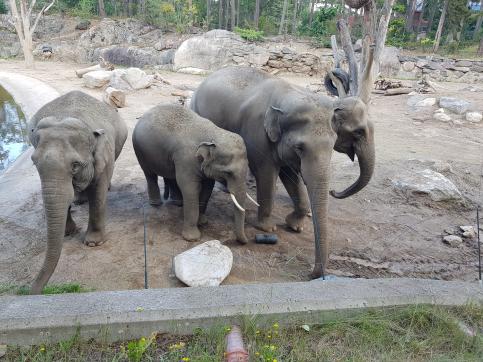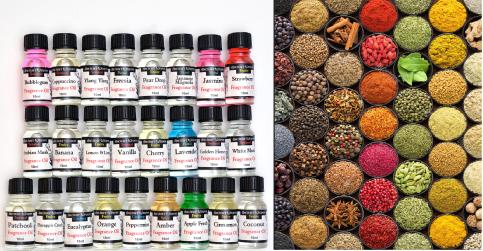Animals

Four Asian elephants (E.maximus) participated in this study which lasted from May 2019-October 2019. The group comprised one adult bull (Tonsak, 21 years old), one young bull (Namsai, 6 years old), and two adult females (Bua, 22 years old, Saonoi, 23 years old). The animals were maintained at Kolmården Wildlife Park, Sweden.
Odor stimuli

All biological materials such as urine or faeces were not allowed to be used due to health concerns. For this study, essential oils and spices were chosen for odor stimuli. Essential oils are liquid and are suitable to impregnate objects, but are difficult to remove. Spices, in contrast, are suitable to be mixed with or spinkled on, e.g. food, and are easy to remove, but difficult to attach to an object. The essentials oils and spices chosen for this study are commonly used and were therefore easy to obtain and relatively cheap which was requested from the animal caretakers.
Eight essential oils, three monomolecular odorants and eight spices were used as odor stimuli in this study.
Essential oils & Monomolecular odorants:
1. Cardamom
2. Vanilla
3. Lemon
4. Orange
5. Mint
6. Cinnamon
7. Lavender
8. Elderflower
9. Geosmin
10. 1-octen-3-ol (Fungus-odor)
11. Trans-4,5-epoxy-(E)-2-decenal (Blood-odor)
Spices:
1. Lemongrass
2. Curry
3. Turmeric
4. Ginger
5. Cinnamon
6. Clove
7. Paprika
8. Black pepper
Mode of presentation

For the essential oils and monomolecular odorants there were three different mode of presentation:
-Wooden logs
-Branches
-Hay/grass
For the spices there were five differnt mode of presentation:
-Trails
-Piles
-Hay/grass
-Shakers
-Ice cubes
Responsible for this page:
Director of undergraduate studies Biology
Last updated:
05/28/20
